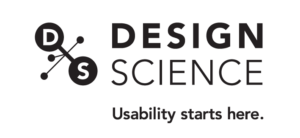DS Designer Creates Downloadable Organ Icon Set
/ in design , designer , free , graphic design , icon , information , news , organ , vector / by Christina SLooking for icons to represent all the sections of the brain? How about an icon representing a bodily system like the nervous system? As a company that often uses iconography to create easily understood deliverables, we often find ourselves scrolling through a host of websites, looking for specific medical icons without success.
A year ago, we decided to stop spending time looking for a comprehensive organ icon set and create one ourselves. This project was initiated by Sarah Fadem (our 2015 design intern) and completed by designer Margo Hurst. We are pleased to announce our organ icon collection has been polished, simplified, and made available for the world to use!
What is an icon?
Icons are simple, easy-to-read graphics which can be integrated ![]() into a design to represent a word or subject on a universal level. Our hope for this collection is that people now have access to a free variety of symbols for the human body.
into a design to represent a word or subject on a universal level. Our hope for this collection is that people now have access to a free variety of symbols for the human body.
Challenges of an organ icon set
This may be surprising, but one of the challenges we faced while developing this set was determining which structures are classified as organs. By definition, an organ is “a relatively independent part of the body that carries out one or more special functions.” Believe it or not, this is a heavily debated subject. The brain is an organ, but what about the parts of the brain? Do they count as individual organs? Many believe they do. This discussion of classification continues throughout the whole body. Our technique started with trying to determine who was right but became based on the logic, “Does a significant number of people think this is an organ? Yes? OK. It’s going into the collection.”
![]() Another challenge we faced was consistency and context. It is not only difficult to determine where one organ ends and one begins, but we constantly evaluated how easily something could be identified out of context of its surrounding structures.
Another challenge we faced was consistency and context. It is not only difficult to determine where one organ ends and one begins, but we constantly evaluated how easily something could be identified out of context of its surrounding structures.
Additionally, organs are illustrated and represented so inconsistently it is hard to render some organs anatomically accurately and still have them be representative of the general populations’ understanding of that organ. For instance, the esophagus is nearly impossible to locate in many medical illustrations. Our solution was to represent it in a way the reader and user can both identify, not necessarily as it specifically looks in the human body.
Download the set
This project turned out to be a significantly more complicated endeavor than we initially expected and we are so excited to share this set for free use. This icon set is available for through The Noun Project (royalty free with subscription or free with credit to the creator) and Iconfinder (Creative Commons license):
Share this entry
-
Share on Facebook
Share on Facebook
-
Share on Twitter
Share on Twitter
-
Share on Google+
Share on Google+
-
Share on Linkedin
Share on Linkedin
-
Share by Mail
Share by Mail










